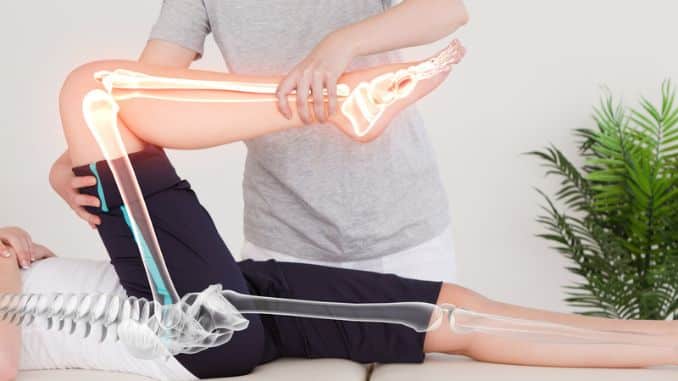
As a freshman track athlete in high school, I had aspirations of making my varsity letter.
How cool would that be as a freshman to receive your varsity letter?
I was a skinny sprinter/jumper, and my best shot at making varsity was the long jump. I was the fourth jumper but quickly moved to the third jumper. Hang in there with me; I’m getting to my point.
We were at a relay meet, where extended jump teams comprised three jumpers. I was the third jumper for this meet. I was doing build-ups with our number two jumper. This kid was built the opposite of me: short, muscular, and had these quads that made him look like quadzilla.
He was doing his build-up in front of me when he screamed like he’d been shot, grasped his hamstring, and went down. Yeah me. He is done for the rest of the season because of a pulled hamstring; I moved up to the #2 jumper and made my varsity letter.
A Good Ratio to Prevent Hamstring Pulls
Fast forward some 20+ years, and I’m a speed coach training athletes like my old teammate to be fast. When it comes to strengthening an athlete for speed, the consensus from many speed experts I’ve learned is that the hamstrings are the weak link.
Most of your leg exercises and movements strengthen the quadriceps more than the hamstrings. I thought doing squats and lunging one winter would enhance my legs for intramural softball. I didn’t do any specific hamstring work. On my first hit sprinting down first base, I tweaked my hamstring.
Lesson learned. You have to include specific hamstring exercises or activities to strengthen them.
Most athletes I see have hamstrings about 50% as strong as their quadriceps, maybe even worse. Experts would love to see it at a 1:1 ratio to maximize speed development, but believe if you get to 75% – 80%, that still helps improve your speed AND is suitable for injury prevention.
Yes, I said injury prevention.
Females and ACL Tears
So, as we start working with more athletes on speed, we see a fair share of athletes (primarily female) that have torn their ACLs. We don’t do the rehab, but as soon as they are cleared from recovery, they come to us to get them back to being the athletes they were.
I’m sure you have also had your fair share of ACL athletes.
One of my good buddies was an ATC, and he researched the subject of what we could do to try and prevent those ACL tears from happening. He created a report that, to this day, I am still selling copies of, discussing the reasons why these incidences keep happening, especially in females.
A few of the highlights of Why Females Get More ACL Tears:
- Many females have blown their ACLs during their menstruation cycle: their period. As a professional, I can’t give help.
- Females’ ACLs may be smaller in diameter than males, thus unable to provide as much support to the joint.
- Female athletes tend to have much weaker hamstring strength than male athletes. Thus, they can’t activate them as quickly to assist in rapid movement.
Whoa, wait a minute. Did I mention hamstring strength again?
- Working Your Hamstrings to Prevent ACL Injuries
Yes, I did. A good percentage of ACL injuries are non-contact. They were acquired by landing from a jump, cutting, or pivoting. Because of the weak hamstrings, there is a ton of added strain to the ACL for support when they do those movements. The athlete wants to rush, but the ACL says, “Nope, not today.”
Now get this. The experts say ideally, they would love to have a 1:1 ratio between the hamstring strength and the quads, but because there are only three hamstring muscles compared to 4 quadriceps muscles, if they can get the hamstring strength to 75% – 80% of the quads that would be the goal.
Yep, you read that correctly, 75% – 80%, the same percentage you are shooting for when trying to develop speed. Consequently, if you are working on speed, you are also reducing the chances of tearing your ACL.
When you get that strength up, you will be more balanced, and your muscles will be firing correctly. Thus, you can reduce the chances of getting other muscle strains. I haven’t had a muscle pull or pressure in my legs since that softball incident, which has been over 14 years. And I still run pretty fast.
Leg Injury By Doing Speed Training
Once that strength is up, we can develop your speed and quickness. Your landing on your plyometric jumps will be better because all the muscles will be firing to stabilize and support. When we do agility drills where you are cutting from one direction to the next, the muscles in your legs will be firing better, giving you more stability. Thus, when you utilize them in your games, you will be faster and better prepared, and your body will have less chance of getting injured.
To help improve your hamstring strength, I have provided two videos of exercises I like. One is the glute-ham raise, and the other is the manual hamstring curl (or manual glute-ham raise). This is in case you don’t have access to a glute ham raise.
The Best Machine to Lessen Leg Injury by Doing Speed Training
If You Don’t Have the Machine Above, A Great Alternative
About Adam
There is more to the process of both speed training and injury prevention. But if you start improving the hamstring strength, the other facets of those processes will become easier to attain.



